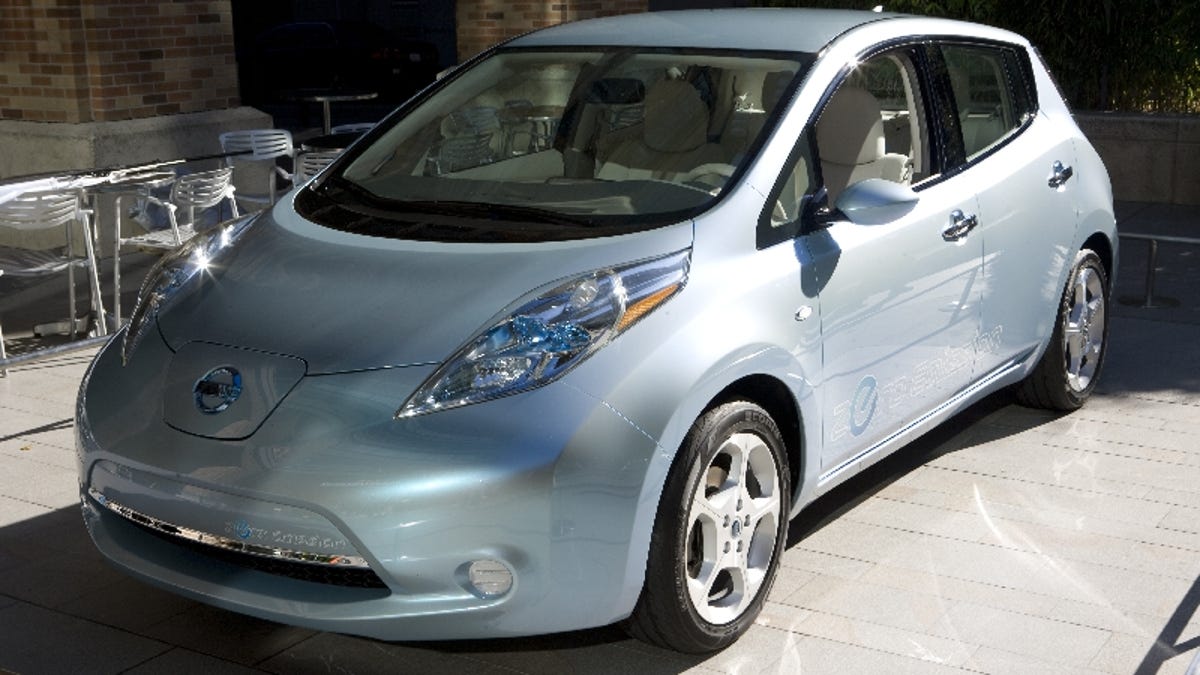Looking under Nissan's Leaf
Nissan brings its Leaf all-electric car to CNET headquarters.

Automakers tend to agree that the electrification of the car is inevitable, but Nissan is leading the way by readying a mass-market, affordable electric car for production. The Leaf is a midsize hatchback with a range of a little more than 100 miles, according to Nissan. Although Nissan didn't let us drive it, the company brought the Leaf to CNET's headquarters so we could get a close look at what might be the future of driving.
When Nissan first released pictures of the car, commenters found it ugly, with its bulbous headlights giving it a frog-like appearance. But in person, the length of the car mitigates that criticism. And looking over those headlights, we could see that they are longer, and more fin-shape than bulbous. The lights are LEDs, used because of their low power draw. The shape of the headlight casings has an aerodynamic purpose, splitting airflow around the side mirrors.
A hatch in front of the car conceals two plug-in points, one a standardized socket for electric vehicles and the other a proprietary Nissan design that can charge the batteries to 80 percent in 30 minutes. The Nissan plug, which would only work with very specific charging stations, uses DC power so that the onboard inverter doesn't have to convert external AC power for the DC batteries. The standardized plug will work with more sources, taking AC power from the grid and running it through the inverter, lengthening the time it takes to charge the batteries.
Nissan developed the lithium ion batteries for the Leaf in conjunction with NEC. The batteries are flat slabs that fit in the chassis of the car. Weighing about 500 pounds, the battery placement and distribution helps to lower the Leaf's center of gravity. Beyond charging from a plug, the Leaf also incorporates regenerative braking. Similar to the Tesla, as soon as you lift off the accelerator, regenerative braking kicks in, sending juice to the batteries and slowing the car.
The Nissan Leaf goes on sale in December of 2010 as a 2011 model. Nissan is counting on 20,000 preorders for the car, and will initially build them in Japan. By the third model year, the company expects to start producing them from its plant in Smyrna, Tennessee.

